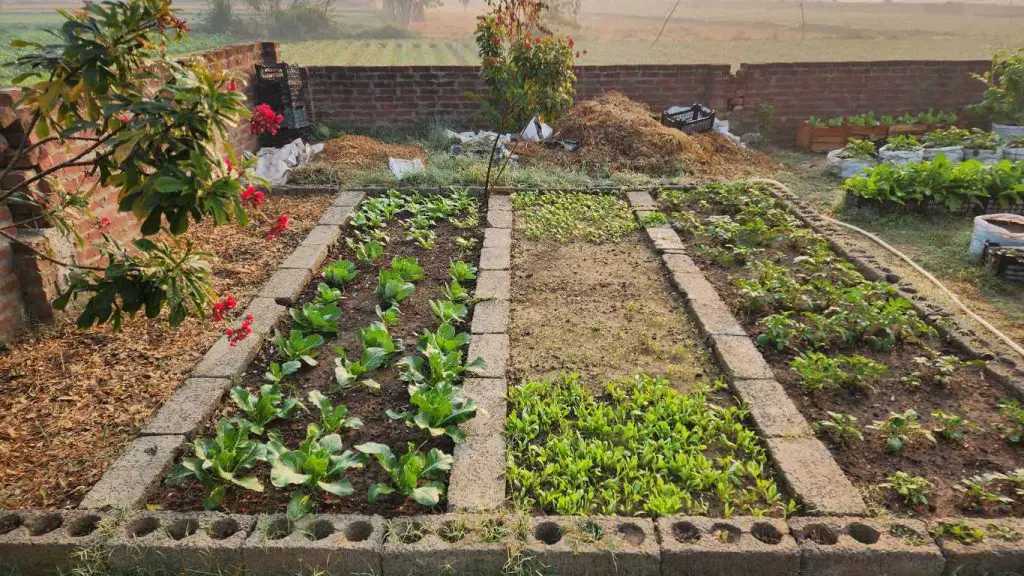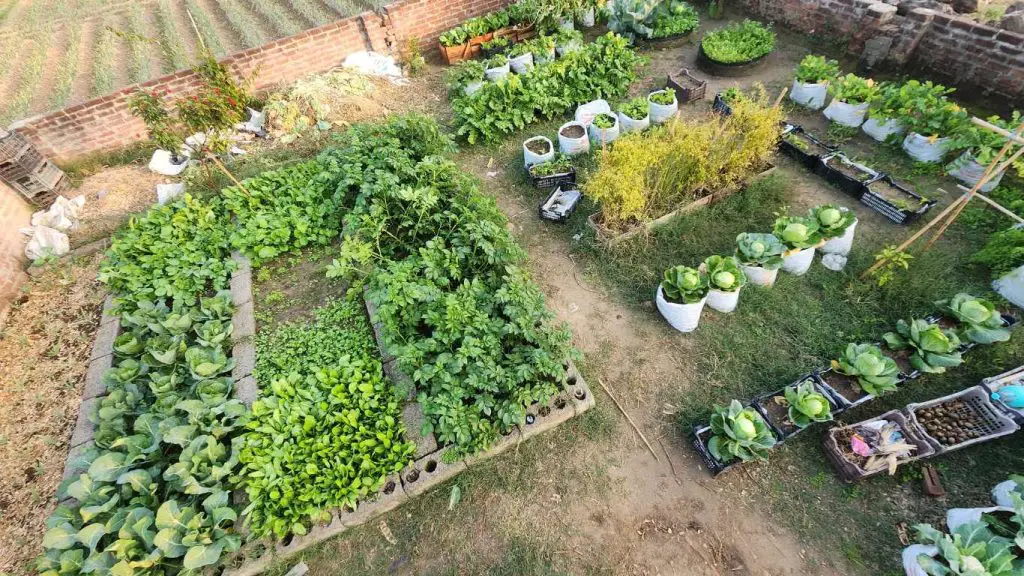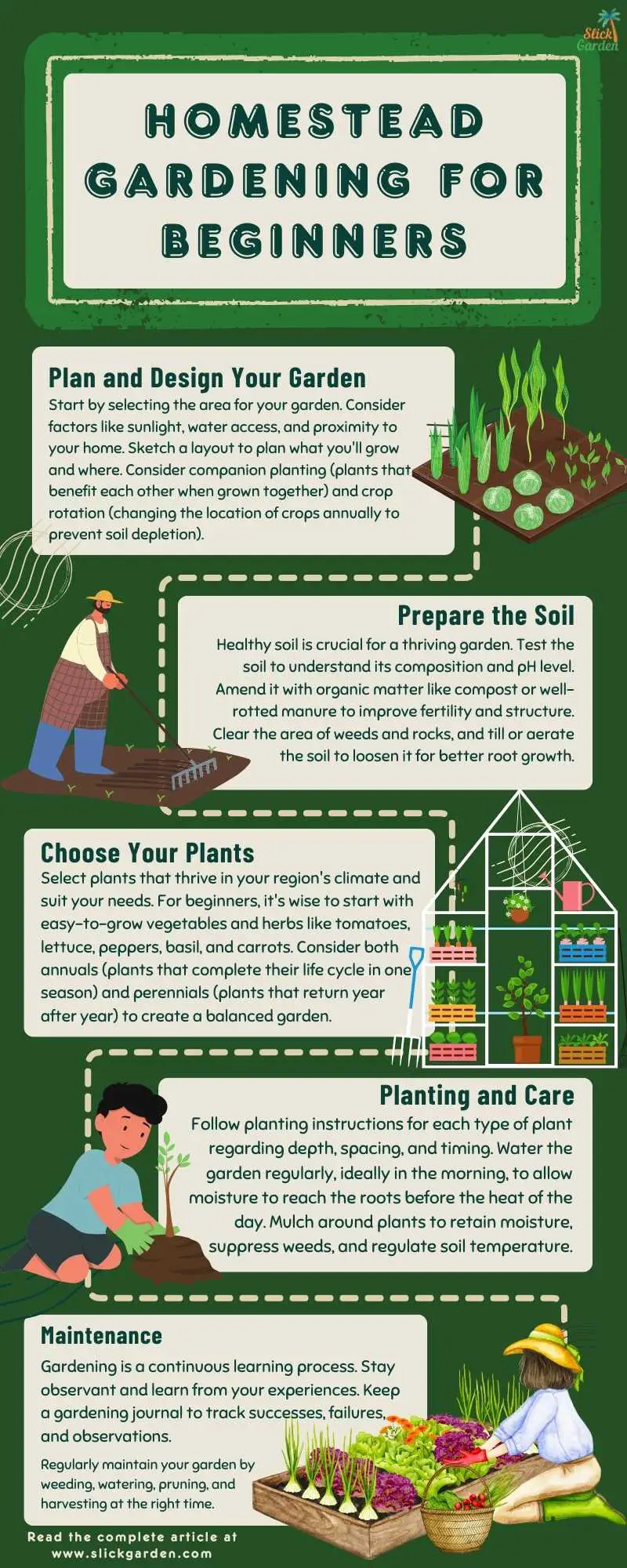Are you prepared to begin your first homestead garden? Or perhaps you tried to establish a garden in the past and failed miserably? Do you believe that gardening requires a green thumb?

No need to worry! Creating a garden on your homestead is a viable option! You don’t need to be an expert gardener. Discover valuable tips, professional perspectives, and practical strategies to create a flourishing garden, starting from the basics.
At Number 1. Planning Your Homestead Garden.
Did you know that you can begin homestead gardening even if you haven’t officially started homesteading? It’s a great way to get started on your homesteading journey. Perhaps you’re starting out with a container garden or even exploring vertical gardening.
Perhaps you’re interested in beginning a modest backyard garden to provide nourishment for your loved ones. Regardless of the situation, it’s important to begin your garden planning well in advance of ordering heirloom seeds.
Begin by selecting a suitable location for planting. When selecting a location for your vegetable garden, it’s important to take into account factors such as the amount of sunlight, soil quality, and growing conditions. The ideal location for your garden plot is determined by the quality of sunlight and soil.
Just a friendly reminder, for successful fruit and vegetable gardening, it’s important to choose a sunny location. If you’re looking to grow food for your family, it’s important to find a location that receives a minimum of 6 hours of direct daily sunlight.
On Number 2. Water And Homestead Gardening.
Consider the availability of water when selecting a spot for your garden. It should be conveniently located near a hose connection or another water source, making it easy to water plants.
However, it is important to ensure that the location is at a safe distance from structures such as buildings and decks to avoid any potential damage caused by excessive watering.
It is essential to establish appropriate watering schedules that take into account the specific requirements of plants, prevailing weather conditions, and the moisture content of the soil.
Collecting rainwater using barrels or cisterns provides a reliable and eco-friendly water source. Planting compatible species together can help maximize water efficiency.
Number 3. Deciding On Garden Size And Layout.

Size and layout are essential factors to consider when planning a homestead garden. Begin by evaluating the space you have, taking into account factors such as the amount of sunlight it receives, the quality of the soil, and the specific requirements of your family.
Starting with a smaller size initially makes it easier to maintain. One option is to divide the space into sections for different crops, which can help maximize efficiency.
Another idea is to integrate raised beds or rows to make the most of the available land. Utilizing companion planting and crop rotation techniques can greatly enhance both crop yields and the overall health of the soil.
Ensure that pathways are clear and unobstructed to allow for convenient navigation and upkeep. Embracing flexibility is crucial. Begin with a modest approach, gradually broaden your horizons, and adjust as you gain experience and encounter evolving needs.
The size and layout of your garden should align with your objectives, available resources, and the responsible utilization of your property.
4. Choose High-Yield Plants.
When starting your homestead garden, focus on selecting plants that will produce a large harvest. Choose crops such as tomatoes, zucchinis, and peppers that provide a plentiful harvest and can be used in a variety of ways.
Leafy greens like lettuce, kale, and spinach are not only packed with nutrients, but they also have a remarkable ability to grow abundantly. Root vegetables such as carrots, radishes, and potatoes are excellent options due to their ability to produce a large quantity and be stored for a long time.
In addition, you might want to think about incorporating herbs such as basil, mint, and cilantro into your garden. These herbs have the wonderful ability to keep growing and regenerating, providing you with a continuous supply.
By choosing these easy-to-grow plants, you can enjoy a bountiful harvest that will provide you with a diverse range of food options for your homestead. This will help you make the most of your garden’s potential and increase its overall productivity.
Keep Reading:
- Raised Bed Vegetable Gardening For Beginners
- How To Start Raised Bed Vegetable Gardening For Beginners?
- 10 Best Diy & Cheap Container Vegetable Gardening Ideas Anyone Can Use

At Number 5. Note What Grew (And What Didn’t).
After completing your garden for the season, it is crucial to observe the plants that thrived and those that did not. Creating a successful homestead garden involves thoughtful planning and consideration over an extended period.
Keeping notes can help remember what changes to make from one year to the next, as there is often a lot of trial and error involved.
Some crops may thrive in a particular garden patch one year, only to struggle the following year. One reason for this is that certain plants, like broccoli, can deplete the soil of nutrients.
To prevent future problems, it’s advisable to alter the planting location and rows in your garden. Create a map detailing the locations where each item was planted, and make sure to jot down any additional observations such as pest sightings, drainage or sunlight concerns, as well as any instances of mildew or disease.
As you gain experience in gardening, you’ll become increasingly comfortable with planting new varieties and broadening your garden.
6. Take Planting Zones Into Consideration.
Understanding planting zones is crucial for successful homestead gardening. Climate plays a crucial role in determining the types of plants that can flourish in different regions.
The U.S. is divided into different zones by the USDA Plant Hardiness Zone Map, which is based on the average winter temperatures.
As an example, Zone 3 represents colder climates, while Zone 10 represents warmer ones. Choosing crops that are well-suited to your specific climate zone can greatly enhance their growth and productivity.
At Number 7. Save Money Where You Can With Some Diy Builds
You might find it challenging to accommodate the soil in a straightforward manner. When it comes to Back to Eden gardening, raised garden beds can be a real game-changer!
Avoid purchasing costly garden beds. I recently spotted some raised garden beds at Costco that were priced way too high! With a little creativity, you can easily garden in almost any container by simply drilling holes in it!
Homesteading is centered around fostering creativity and acquiring a diverse range of skills. These garden beds are an excellent project for beginners, even if you have no prior building experience.
Starting your homestead gardening journey is a significant move towards becoming more self-sufficient and fostering a deeper connection with nature.
Embrace the art of gardening and let it transform more than just your backyard. Cultivate a way of life that is filled with strength and prosperity, all while being patient and mindful.
Experience the beauty of nature’s cycles and the fulfillment of growing your own fresh produce through experimentation and care. Keep in mind that every withered leaf has a lesson to offer, while every blossoming bud is a source of inspiration.
As you nurture your garden, may it not only produce bountiful crops, but also bring you a profound sense of satisfaction and a greater appreciation for the wisdom of the earth. Step into the wonderful realm of homestead gardening!
